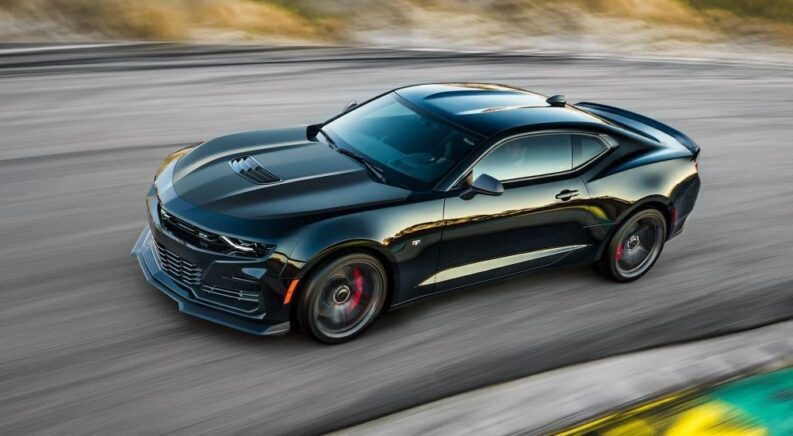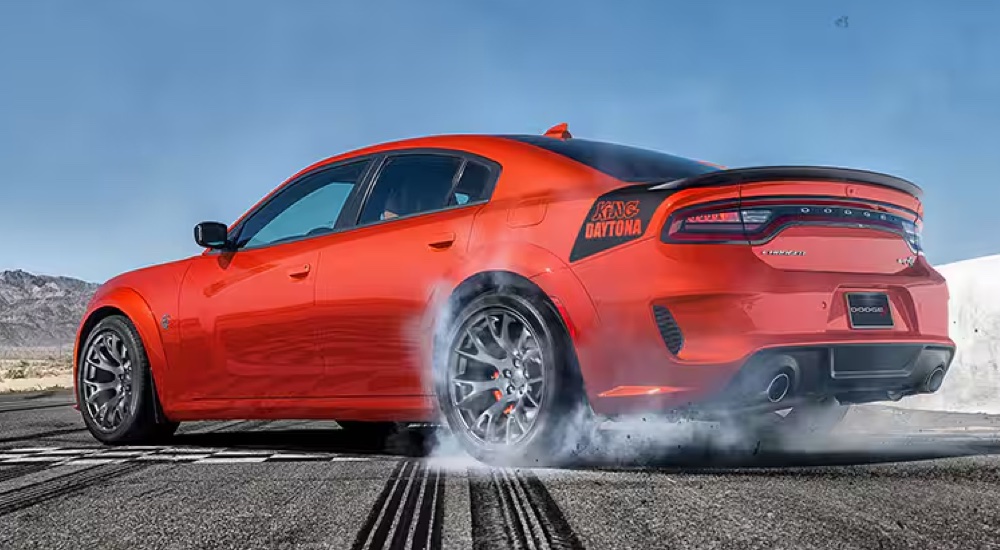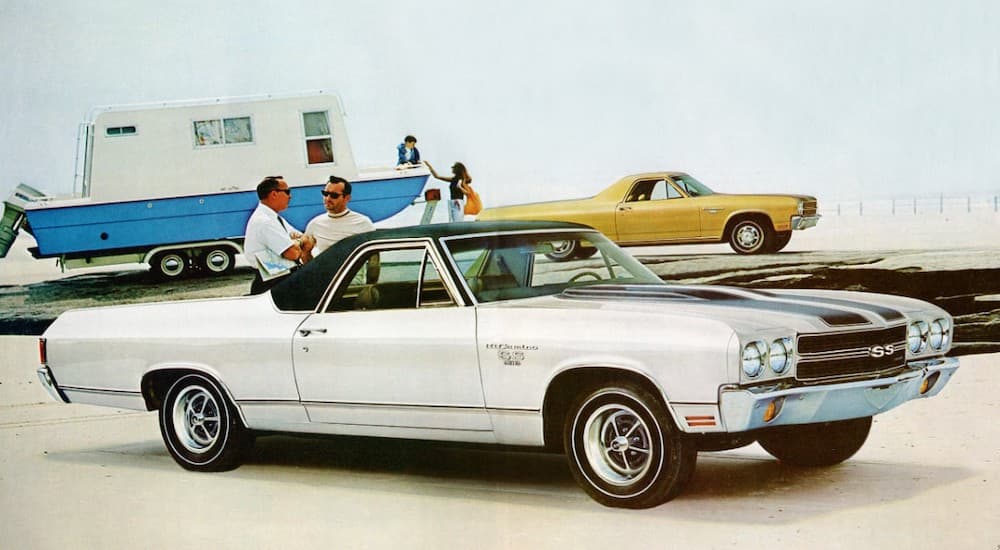Everyone knows the sound of a V8 roaring, even if they’re not a car person. With their massive torque and horsepower figures, V8s are the only engines that can satisfy serious cravings for what can only be described as oomph. However, it’s no secret that administrations at every level have been putting pressure on vehicle manufacturers to produce more fuel-efficient and environmentally friendly vehicles.
Like many things we know aren’t great for us, like fast food and cigarettes, there will always be some naughty consumer items we can’t get enough of. American V8 muscle cars are in that category. If you’re feeling nostalgic and want one of these pretty beasts in your driveway, you’ll most likely have to shop for used cars for sale unless you want a Ford Mustang, currently the only American V8 muscle car still in production. Otherwise, pre-owned will be your only option. Let’s take a look at six used V8s you can still find use.
Chevrolet SS
The Chevrolet SS had a very short stint in the Chevy family, only in production from 2014 to 2017. It was an interesting model and was considered by some to be a competitor to the E39 BMW 5 Series. The SS dipped its tires into two categories of vehicle, sitting on the same platform as the Camaro of the time and offering looks very close to the Malibu with some serious performance chops.
The SS had a 6.2L V8, rear-wheel drive, and a six-speed automatic transmission. Chevy eventually offered the SS a manual transmission as well, offering a thrilling and hands-on experience with the road. The SS was something of a chameleon that way. Was it a commuter car, ready for corporate clients and cosmopolitan cruising, or was it a track-ready beast? It’s hard to say, which could be why sales figures weren’t great for the SS. Many drivers were sad to see the SS go.
Dodge Challenger and Dodge Charger
We group the Dodge Challenger and Dodge Charger together because they’ve had nearly parallel journeys and hit the market within just a few years of one another. The original Charger first graced us with its presence in 1966, and the Challenger arrived just a few years later for the 1970 model year. Historically, the two have tended to offer similar performance. In 2015, Dodge introduced the SRT Hellcat models for each vehicle, with their phenomenal 707 hp. The two really have been simpatico for decades. The major difference is that the modern Charger is a four-door performance sedan, while the Challenger is a two-door coupe.
What the two certainly shared in common was their ability to deliver track-ready performance at an everyday consumer price, something for which we’ve always loved Dodge. They’ve each made silver screen appearances in several Fast and Furious films. Like its competitors, Dodge started to receive pressure to get rid of these fume-spewing beauties, and 2023 marked their last year in production. They did go out with a bang, though. Dodge created a nostalgic “Last Call” series of limited editions for both models, with showstopping performance that will surely leave these cars’ marks on the world. Some even have stylistic details that are nods to milestone moments in the two models’ respective histories that true fans will appreciate.
Chevrolet Camaro
You can’t mistake a Chevy Camaro for any other vehicle. Its distinct long nose demands attention. Stop by any classic car night at diners and car lots around the country on a Friday night, and you’re bound to see at least a few well-kept Camaros with proud owners posing in front of them welcoming selfies.
Chevy first released the Camaro in 1967. It was the brand’s competitor to the Ford Mustang, which had just hit markets a few years before in 1964. Chevy rapidly took to the drawing boards to keep up, and we got the Camaro with its imposing stance, sloping roof, and ultra-cool vibe. Over the years, we have had Camaro coupes and convertibles. The original only had some small block V8 options, a far cry from the enormous V8s we’d receive later, like the 2012 6.2L V8 with its 580 hp.
The Camaro has also made a name for itself in racing events, including NHRA drag racing, the Trans-Am series, the International Race of Champions that inspired the famous IROC trim, and as an Indianapolis 500 pace car. The Camaro has left and re-entered production a handful of times throughout the decades. It’s one of those models that Chevy couldn’t decide to keep or get rid of. Recently, Chevy once again announced that it would stop production of this performance vehicle at the end of 2023. However, Chevy’s on-again-off-again relationship with the model makes us wonder if it’s “the end.”
Cadillac CTS
The Cadillac CTS lasted almost 20 years in the Cadillac lineup. Cadillac started making the CTS in 2002 for the 2003 model year. CTS stands for Catera Touring Sedan, referring to the Catera luxury sedan that Cadillac made in the 1990s. The name is fitting because the Cadillac CTS is an equal part upscale cruising car and an exciting performance model. In fact, the CTS is based on the track champion Cadillac DPi-V.R race car. Particularly in the performance CTS-V trim, the CTS delivers track capability in a comfortable, spacious, and luxurious vehicle with classic Cadillac styling.
As for the performance elements, you’ll find fun perks like a massive V8 derived from the Corvette, paddle shifters, a rear spoiler and diffuser, high-performance brakes, and various drive modes, including Sport and Track on some models. Add to that perks like launch control and ergonomic performance seats, and the Cadillac CTS should more than earn the respect of serious performance enthusiasts, even if, on the outside, it looks like a cushy sedan.
Chevrolet El Camino
The first El Camino sat on the full-size Brockwood station wagon chassis and only ran from 1959 to 1960. The El Camino that most of us remember was reintroduced in 1964 on the midsize Impala platform. It was a sedan/pickup (yes, that was a thing) and was posed as the competitor to the Ford Ranchero at the time. Made for those who needed a vehicle just right for shopping at the boutiques and working the farm, the El Camino was a unique model. It continued in production in various forms up through 1987, when it was discontinued, to the sadness of many.
However, rumors are now spreading that it’ll be back in 2025. There is even footage of the alleged model circulating online and whispers on fan forums about a new compact pickup reviving the El Camino badge. It may seem strange that Chevy waited until now to bring back an El Camino. It would have been easy to bring over the Holden Ute from Australia and badge it as an El Camino, the same way Pontiac gave us a modern GTO based on the Holden Monaro. However, it makes sense that Chevy would want to bring out a compact pickup in style because its competitors certainly have. Ford has its popular Maverick, and Hyundai has its Santa Cruz. Chevy might want to keep up, and reviving the El Camino name for this new ride might be just the ticket.






